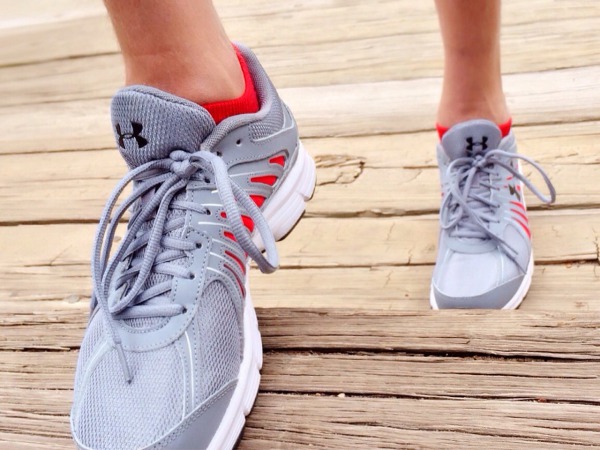Common Ankle Injuries And How To Avoid Them

Injuries are a nightmare. There is not a person in the world who has ever thought “I wish I was injured right now”. Ankle injuries, in particular, are difficult to deal with. Things like driving a car, doing the housework and walking become difficult and painful.
There are a few common ankle injuries that many athletes and runners see all the time. In this article, you’ll discover:
First off, let’s start with the few reasons why some people may be more susceptible to injuries in the first place:

An everted foot position means that the weight of your body is falling onto the outside of your foot, and not equally distributed through the middle of your foot. This imbalance of body weight will cause a decrease in the natural arch of the foot which lowers the amount of support you receive. This will naturally increase your risk for ankle injuries.
Everted ankle movement can be indicated by standing up straight, and raising yourself onto your tippy toes. Looking in a mirror, you should be able to see whether your ankles seem to turn outward as you move up and down or whether they remain straight. If they do shift outward, this is a sign you have everted ankles and is a cause for many ankle injuries.
If your body includes these two imbalances, then keep reading to learn how the shifts in position and movement of your foot and ankle may cause these common injuries:
A sprain is a damage to the ligaments of your body, which attach muscle to bone. An inversion sprain is a damage to the ligaments of the outside of your ankle. You will feel a sudden, sharp pain, followed by swelling and bruising, if you suffer from an outward “rolling” of your ankle or foot.
If you have Achilles tendinitis, you will experience a swelling of your Achilles tendon, which is the tissue that connects the heel to the muscle of the lower leg. A tendon attaches muscle to bone and extreme flexing of this tendon will cause tension in your Achilles. You can also twist this tendon, causing a sprain. A rapid increase in speed or distance, old running shoes, or tight calf muscles are some of the causes of Achilles Tendinitis.
This is a break of the bone, and in ankle injuries, a breaking of the outside bone. Extreme force of the ligament will create a break in the bone, and can pull a piece of bone from the ankle. Forceful landing can also cause a fracture.
For a more in-depth explanation of common ankle injuries, check out this link here.
For more exercises to prevent injuries and treat them once they’ve occurred, check out this link from the fitness experts at WatchFit.
It is possible to continue running even after you develop an ankle injury, just ensure that you take it easy and listen to your body, and read some specific advice on how to do it safely.
Now you know the most common ankle injuries runners and athletes face. Start with doing the test described earlier to check your ankle alignment and then pick just one step above to focus on improving the structural integrity of your ankles. If you do, you will have healthy and painless ankles for a long time to come.
Rohit Madhav is the founder of London based Ankle Foot Motion and specialises in treating sporting related ankle injuries.
